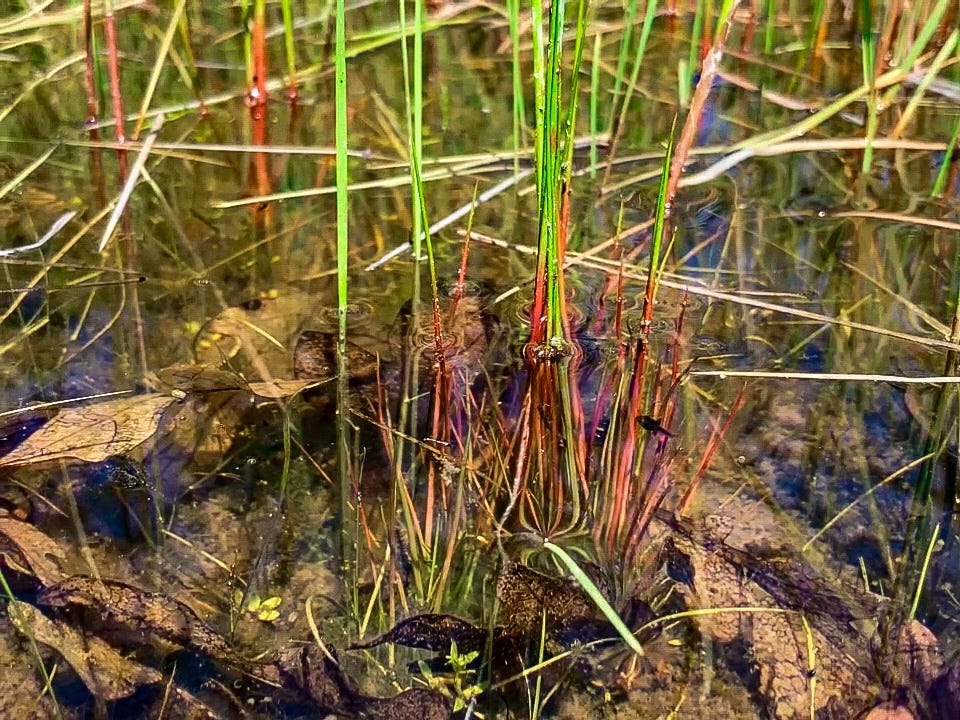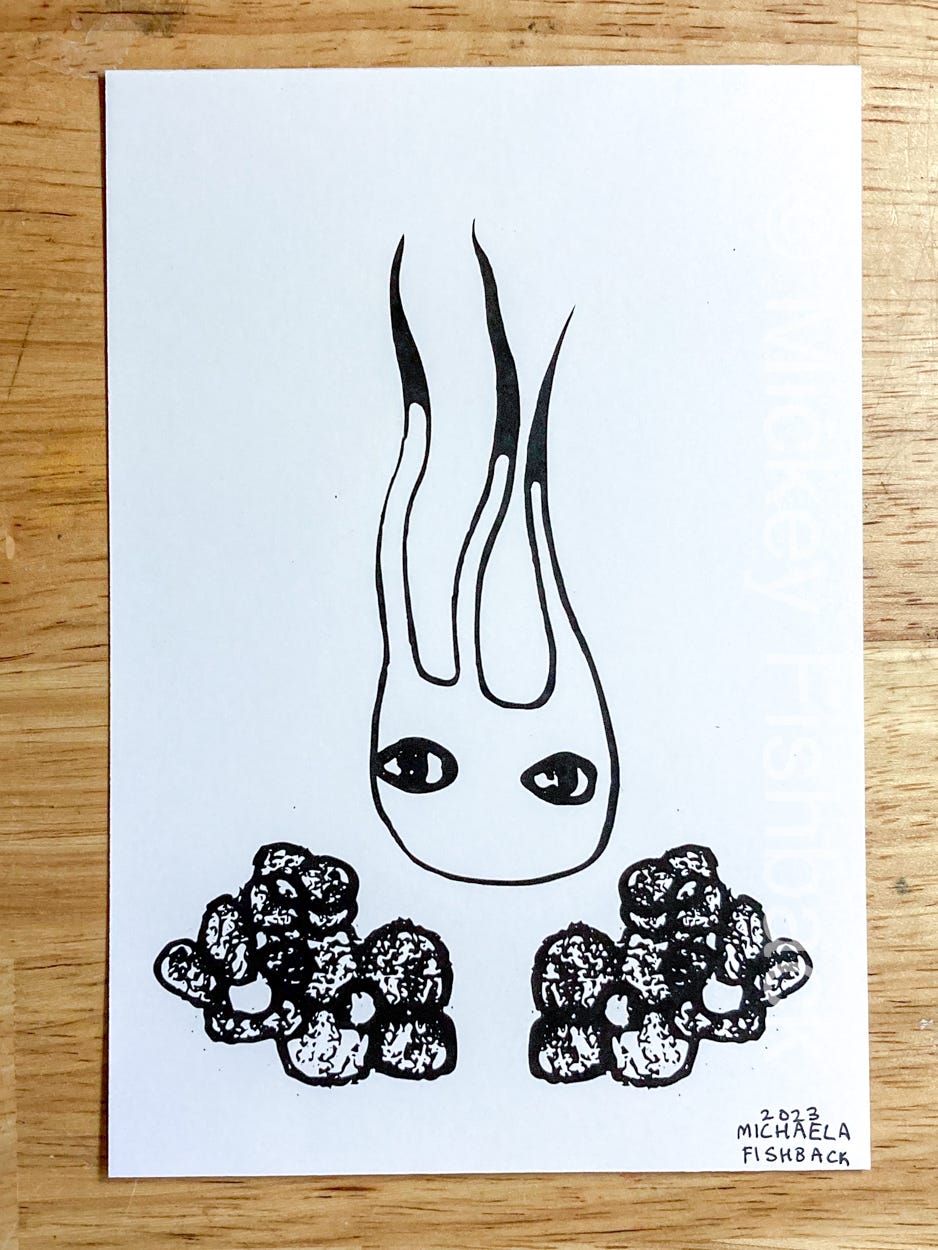Habitats form and fluctuate
and life bubbles to the surface!
I was the substitute teacher for a high school science class on their field trip to a local lake last week. There was another teacher there too, so my job mostly consisted of making sure everyone was having as much fun as possible. I was walking along a trail through the lovely native shrubs and wildflowers, enjoying the spring sunshine, when the path was suddenly submerged in a massive puddle. Bam! Perfect opportunity to look at some very pretty moss. I took some photos (featured below) and did some reading to get a better sense of the little aquatic realm I found.
They’re everywhere! Teeming with eggs, detritus, mud, starwort (fantastic name for a plant), tadpoles, bubbles, life, life, life. How could you not be obsessed with them?
Vernal pools are temporary aquatic habitats formed by spring rain. Described in 1885 by naturalist Charles Orcutt as ‘miniature lagoons’ and ‘little lakes’ before the modern term was used by botanist Willis Linn Jepson in 1925, vernal pools are the sparkly and elusive intermediary between more permanent bodies of water and dry land.
Landscape painter / California’s first female professional ecologist / absolute icon Edith Purer published the first official study on the ecology of vernal pools in 1935. Edith was a really impressive person, given that there were hardly any women publishing ecological research when she came onto the scene. And she was a fantastic artist.
Scientists call the plants and animals that we tend to find in these mud puddles ‘vernal pool specialists,’ which I love, because it’s nice to think about specializing in one’s own locale. There are lots of species that are only found in very specific vernal pools (species found only in one specific place = endemic species). That’s kind of fascinating, because vernal pools are temporary. They bubble up for a couple seasons, then dry up until the following year’s rain. So why so many rare species?
One of the biggest reasons that rare species have evolved to life in the (miniature) lagoons is that there are fewer predators than there are in other aquatic situations. Because the pool is temporary, it’s literally too hard to find before it’s gone. Ecologists came to that conclusion after noticing that there are more predators (usually bugs) around the longer the duration, or hydroperiod, of the pool. In exchange for having fewer predators, vernal critters just have to cope with the extreme variability of their spot, because it could dry up or re-flood any time. So brave of them! Just emerging blindly and hoping for the best, acting quickly, so little to be scared of, surrounded by big ginormous blades of grass and bugs and stuff. I saw a water beetle get wiped out by a bubble while I was staring at this vernal pool:
Stunning.
Here’s a painting I did earlier this year inspired by the special magic quality little pools and ponds seem to have:
And speaking of my art…
Prints (and more!) are available for $4 - $15 at mickeyfishbackshop.com.
I hope your mid-May progress through your vernal season, whatever it looks like for you, is as bubbly and alive as that puddle I found! Bye!











I love everything about this. Thank you for sharing your vision and thoughts.